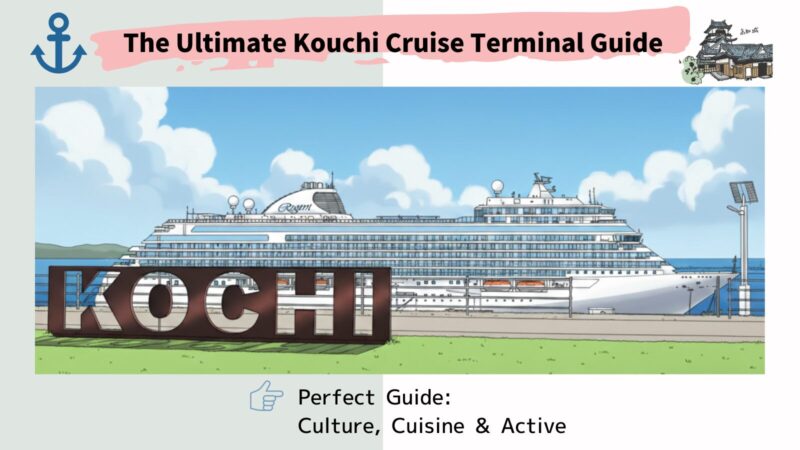
When your cruise ship pulls into a Japanese port, do any of these concerns sound familiar?
- You’ve only got half a day in Kochi Cruise Port– can you really hit all the highlights without feeling rushed?
- You didn’t come all this way to Japan just for another cookie-cutter tourist experience – you want something authentic, something real
- Between you and me, you’re wondering: is Kochi Cruise Port actually worth leaving the ship for, compared to Japan’s more famous ports?
Look, I get it. Trying to experience Kochi’s culture, cuisine, and that active volcano (yes, really!) in just half a day without a solid game plan? That’s a tall order.

Hi there! I’m Aoi, and I’ve spent years helping travelers like you make the most of their Japanese port stops through my site, Japan-cruise BLOG.
I’ve learned exactly what works and what doesn’t – and the key isn’t trying to see everything; it’s knowing what truly matters.
In this ultimate guide to Kochi’s cruise port, I’m going to walk you through exactly how to maximize that precious half day. We’ll cover the three things that make this port special: genuine cultural experiences, incredible food you won’t find anywhere else, and yes, an active volcano you can actually visit.
By the time you finish reading this, you’ll know exactly how to skip the tourist traps and zero in on the authentic experiences that other cruise passengers miss. Trust me, you’ll understand why Kochi deserves a spot at the top of your “ports worth exploring” list.
Ready to turn that half day into an unforgettable Japanese adventure? Let’s dive in.
Kochi Cruise Port Essentials
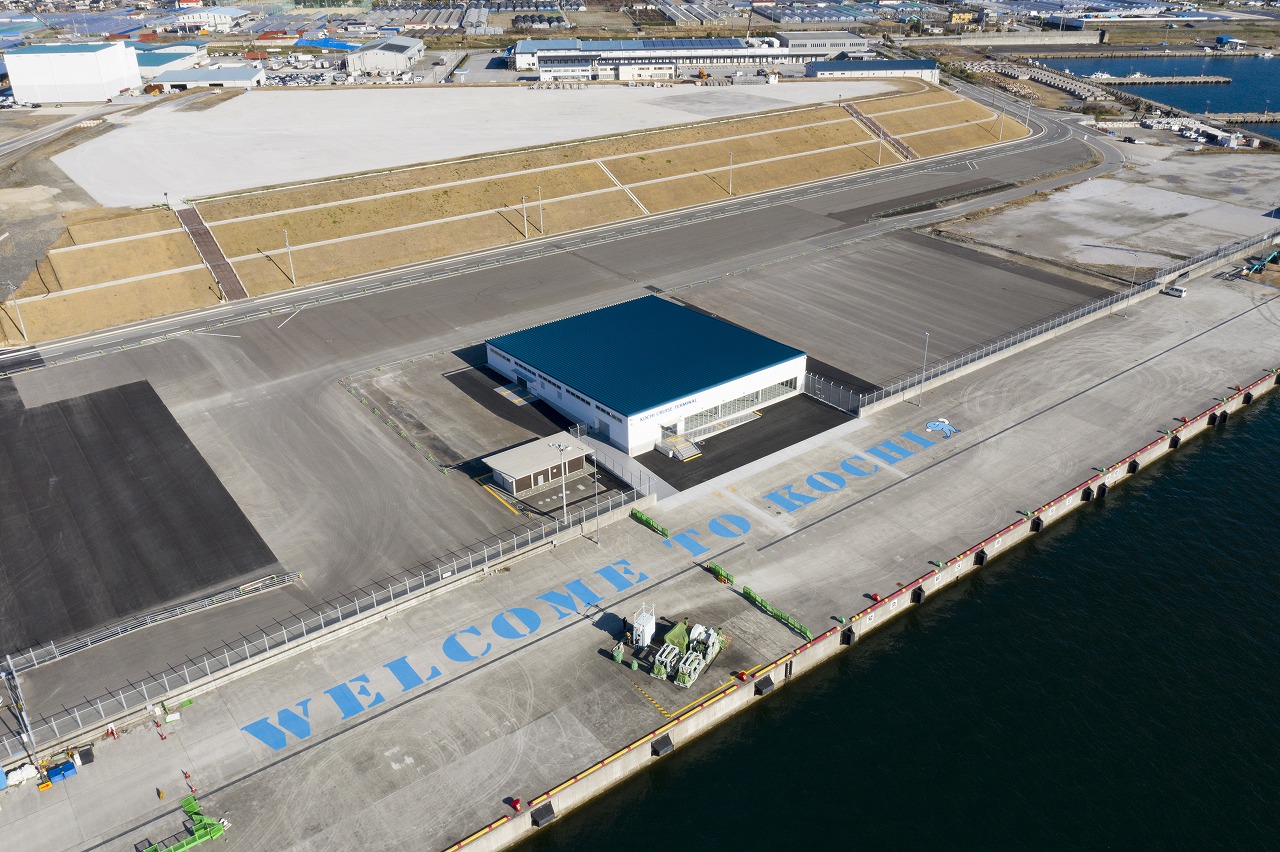
You know what really sets Kochi Port apart? It’s the incredible warmth and genuine hospitality—what the Japanese call omotenashi—that you’ll experience from the moment your ship pulls into port. This isn’t just polite service; it’s a heartfelt welcome that comes from the local community’s deep pride in their culture and their genuine excitement to share it with visitors.
Here’s something I think you’ll absolutely love: every single time a cruise ship arrives, the local people perform Yosakoi, Kochi’s famous traditional dance. Picture this—vibrant costumes, energetic movements, and infectious music right there on the dock as you disembark. It’s not a staged show put on by professionals; these are real community members who come out to celebrate your arrival. How wonderful is that?
And it’s not just me saying this. Cruise lines consistently praise Kochi Port for two key reasons: yes, its convenient Pacific Ocean location makes it easily accessible, but what they really rave about is this exceptional welcome from the local community. That’s how you know it’s the real deal—when even the cruise companies themselves, who’ve seen ports all over the world, single out Kochi’s hospitality as something truly remarkable.
This kind of authentic cultural welcome is exactly what makes a port memorable, isn’t it lovely?
Terminal Facilities & Amenities
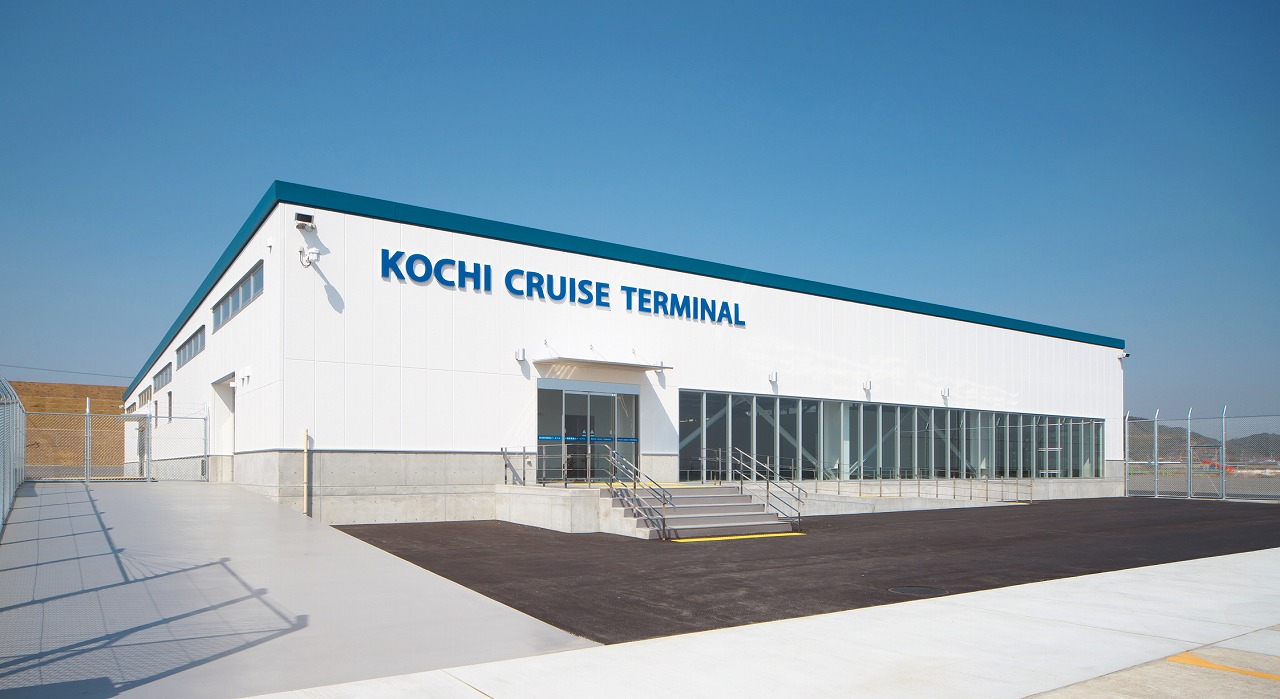
Let me walk you through what you’ll find at the Kochi Shinko Cruise Terminal. It’s a well-equipped facility that makes your arrival in Japan smooth and comfortable, you know.
The terminal has a comfortable waiting area where passengers, crew members, and even visitors can relax before or after their journey. It’s really nice to have a proper space to catch your breath after disembarking.
For international cruise ships, the terminal is fully equipped with CIQ facilities—that’s Customs, Immigration, and Quarantine. Everything you need to enter Japan is right there, which makes the whole process much more convenient than you might expect.
You’ll also find essential amenities like washrooms and an ATM, plus there’s an information counter where friendly staff can help answer your questions. These little touches really make a difference when you’re in an unfamiliar place.
Staying Connected: Free Wi-Fi
Here’s some good news for you—free Wi-Fi is available at Kochi Shinko Port and throughout various facilities in Kochi City. You know how important it is to stay connected when you’re traveling, whether you’re looking up restaurant recommendations, sharing photos with family back home, or just checking your map.
The connection process is pretty straightforward, and I’ve included an image below that walks you through the steps. Take a quick look at it before you arrive, and you’ll be all set!
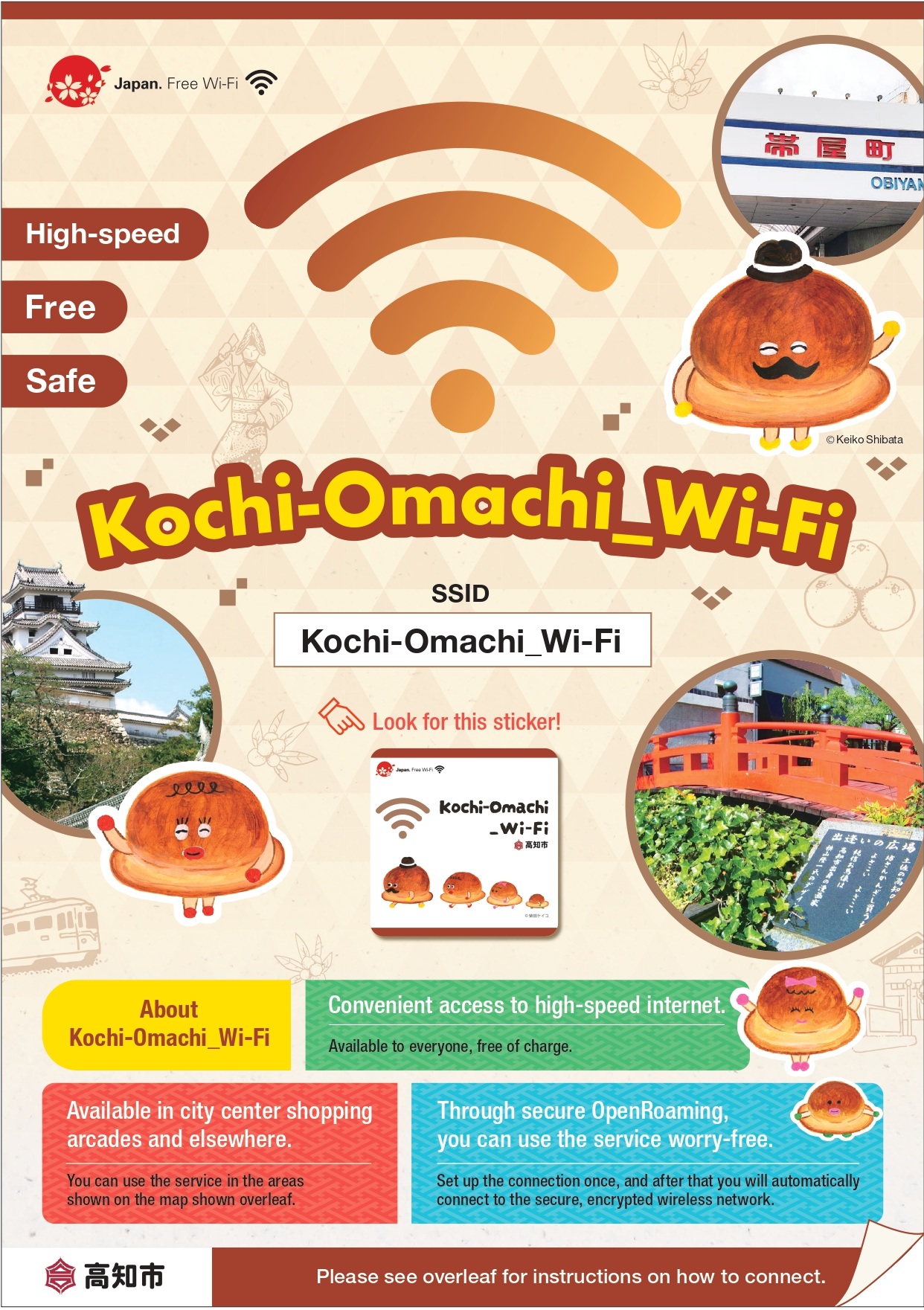

A Couple of Things to Keep in Mind

The terminal itself doesn’t have permanent shops or restaurants—it’s more of a functional space than a shopping destination. But don’t worry! When large cruise ships come into port, you’ll often find temporary food stalls and souvenir stands set up for the occasion. It actually adds to the festive atmosphere, isn’t it lovely?
Getting Downtown: Your Transportation Options Explained
Now, here’s something practical you should know. Taxis are usually waiting at the terminal when cruise ships arrive, but they can get pretty busy. I’d recommend booking one in advance if you can—it’ll save you time and give you peace of mind.
Depending on which cruise line you’re traveling with, there might be a shuttle bus service that runs directly to downtown Kochi. That’s how it works with some of the major cruise companies, so it’s worth checking with your ship’s shore excursion desk.
Experiencing Authentic Kochi: Cultural Encounters That Matter
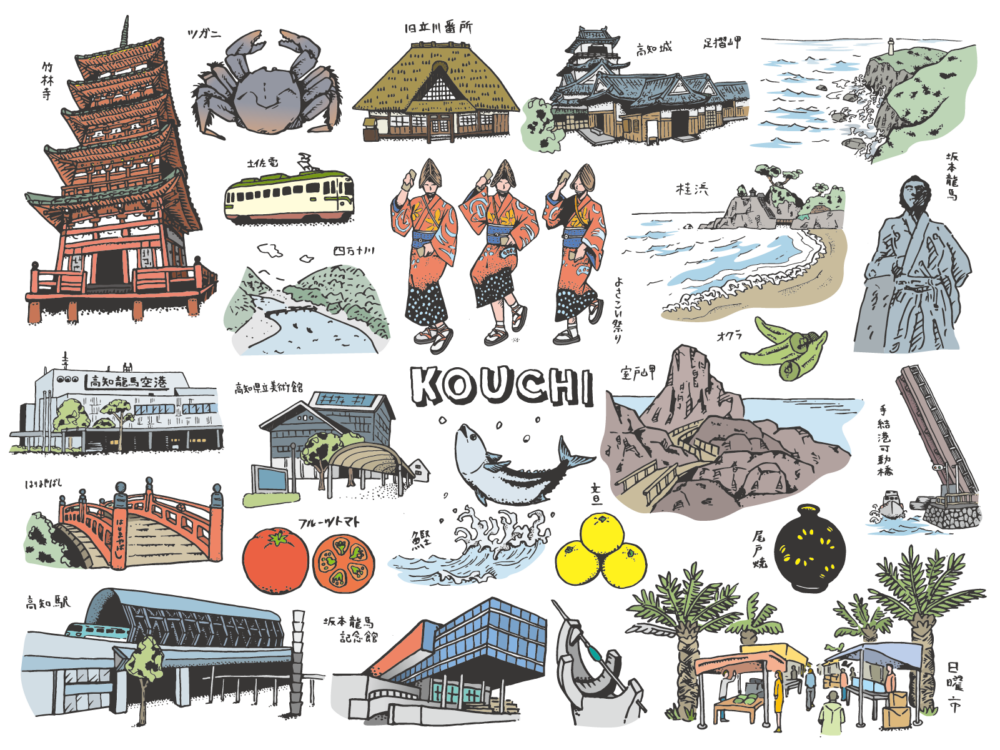
Around Kochi Shinko Port: Katsurahama Beach—The Stunning Vista That Captivated a Samurai Visionary
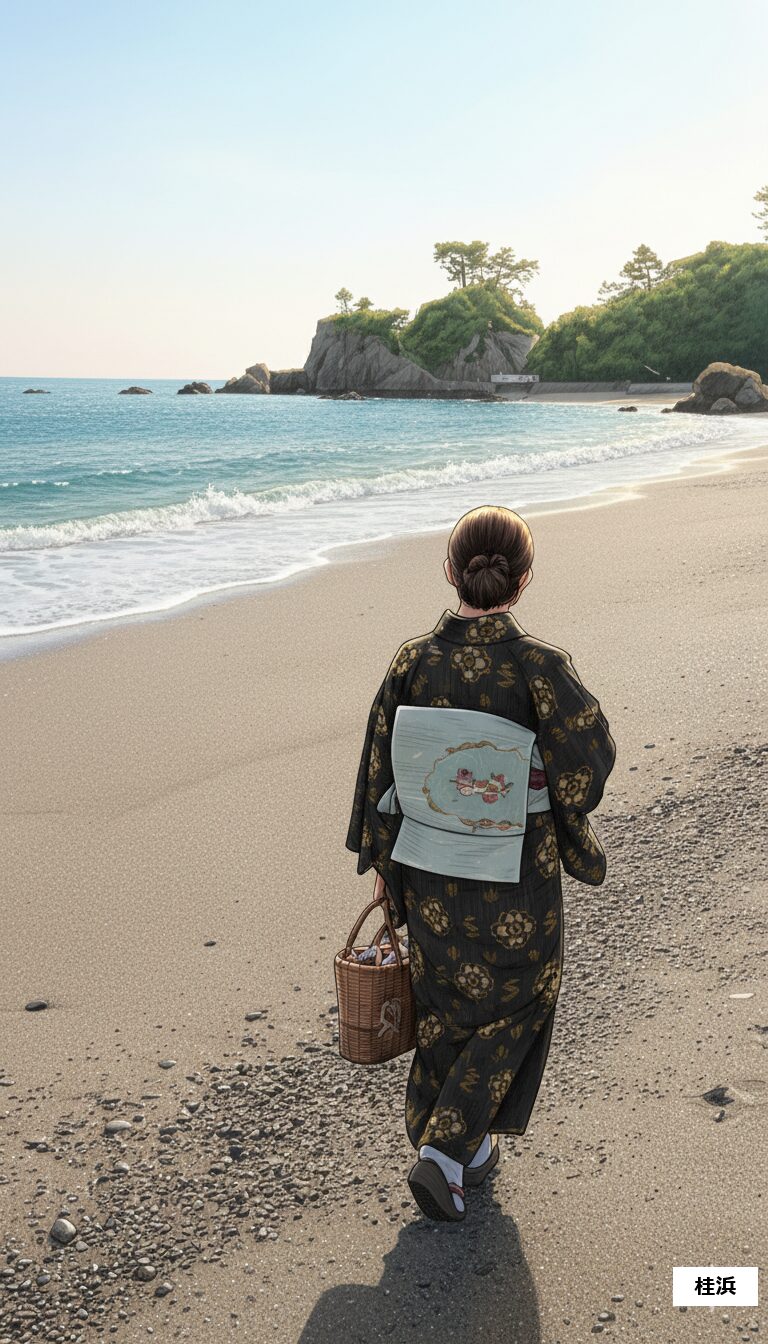
A Breathtaking Pacific View and Kochi’s Most Celebrated Scenic Spot
Let me introduce you to one of Kochi’s most treasured destinations—Katsurahama Beach. This isn’t just any beach, you know. For centuries, it’s been celebrated as one of Japan’s premier scenic spots, where the mighty Pacific Ocean stretches endlessly before you.
The best part? It’s just about a 40-minute walk from the cruise terminal, making it perfectly accessible for a morning or afternoon excursion.
Katsurahama is so beautiful that it’s immortalized in the famous Yosakoi folk song with the line “The moon’s most beautiful place is Katsurahama.” And when you visit on a moonlit evening, you’ll understand why—watching the moon’s reflection dance across the waves creates an almost magical atmosphere. The beach has even been selected as one of Japan’s “Top 100 Sunrise Spots,” a place where nature’s raw power and profound tranquility exist in perfect harmony. It’s really something special.
The Landscape That Inspired Sakamoto Ryōma
Now, here’s where the history gets fascinating. Katsurahama holds a special place in Japanese hearts because it was beloved by Sakamoto Ryōma—think of him as one of Japan’s most visionary figures from the 1860s. During a turbulent period when Japan was transitioning from centuries of isolation to becoming a modern nation, Ryōma was instrumental in helping shape the country’s future. He was a samurai, yes, but also a forward-thinking reformer who dreamed of a unified, modernized Japan.
Legend has it that he would stand on this very beach, gazing out at the Pacific, contemplating Japan’s destiny and its connection to the wider world. It’s quite moving when you think about it—this young man from a small province, dreaming big dreams while watching the endless ocean.
Today, an impressive bronze statue of Ryōma stands at Ryuzuzaki Point at the southern end of the beach, gazing out at that same Pacific horizon he loved. Created by local sculptor Hakuun Motoyama, the statue is pretty magnificent—standing 5.3 meters tall (that’s about 17 feet), and with its pedestal, it reaches an impressive 13.5 meters (roughly 44 feet). He stands there, eternally looking toward the vast ocean, and honestly, it’s quite powerful to stand beside him and share that same view.
Get Up Close: The Special Observation Platform Experience
Here’s something you won’t want to miss if you’re visiting during the right season. Twice a year—for about two months starting in early April, and again for two months around Ryōma’s birthday (November 15th)—the local community sets up a special observation platform right next to the statue.
This is your chance to get up close and personal with this iconic figure. Usually, you’re looking up at him from ground level, but during these periods, you can stand right beside him at eye level. Imagine standing there, literally shoulder-to-shoulder with history, sharing that same panoramic Pacific view. It’s become quite a popular seasonal event, and for good reason—how often do you get to experience history from that perspective?
If your cruise happens to dock during one of these windows, I’d definitely recommend making the effort to visit. It’s one of those experiences that stays with you, you know.
Making the Most of Your Katsurahama Visit
Katsurahama offers so much more than just a beautiful coastline. The surrounding area includes Katsurahama Park and the Sakamoto Ryōma Memorial Museum, making it perfect for combining leisurely strolls with fascinating historical exploration.
Take your time walking along the beach, feeling the Pacific breeze on your face. Snap some photos with Ryōma’s statue as your backdrop—it makes for quite the memorable shot, I promise. The real beauty of this place is how seamlessly it blends Kochi’s stunning natural scenery with its rich historical heritage. It’s not just about seeing the sights; it’s about experiencing a piece of Japan’s transformative history in one of its most beautiful settings.
Practical Information for Your Visit
| Category | Details |
|---|---|
| Location | Urado Katsurahama, Kochi City, Kochi Prefecture |
| Access | About a 40-minute walk from Kochi Shinko Cruise Terminal (taxi available for a quick ride) |
| Must-See Highlights | Sakamoto Ryōma statue, Katsurahama Park, stunning Pacific Ocean views |
| Special Events | Observation platform next to Ryōma statue (limited seasonal openings in spring and fall) |
| Good to Know | Swimming is not permitted due to strong currents, but well-maintained walking paths and viewing areas make exploring safe and enjoyable |
Why Katsurahama Should Be on Your Itinerary
Cultural Significance: This is the beach celebrated in traditional folk songs as “the most beautiful place to view the moon”—and that reputation has held strong for generations.
Convenience: Just a pleasant 40-minute walk from your ship, making it an easy half-day excursion.
Historical Connection: Stand where a visionary samurai once stood, contemplating Japan’s future while gazing at the endless Pacific.
Unique Experience: Those seasonal observation platforms give you a once-in-a-lifetime chance to see Ryōma’s statue from a perspective few visitors get to experience.
Perfect Blend: It’s rare to find a place where natural beauty, fascinating history, and genuine romance come together so seamlessly. That’s how it works at Katsurahama—it’s become Kochi’s quintessential tourist destination for all the right reasons.
When you visit Katsurahama, take a moment to really feel it all—the Pacific wind on your face, the weight of history around you, and the bold spirit of a man who dared to dream of transforming an entire nation. There’s something about standing in that spot, with that vast ocean before you, that awakens something inside. Maybe it’s courage, maybe it’s inspiration, or maybe it’s just the reminder that we’re all part of something much bigger than ourselves.
Trust me, this isn’t just another photo stop. It’s an experience that resonates, you know?
Shore Excursion: Kochi Castle—A Journey Through Samurai History
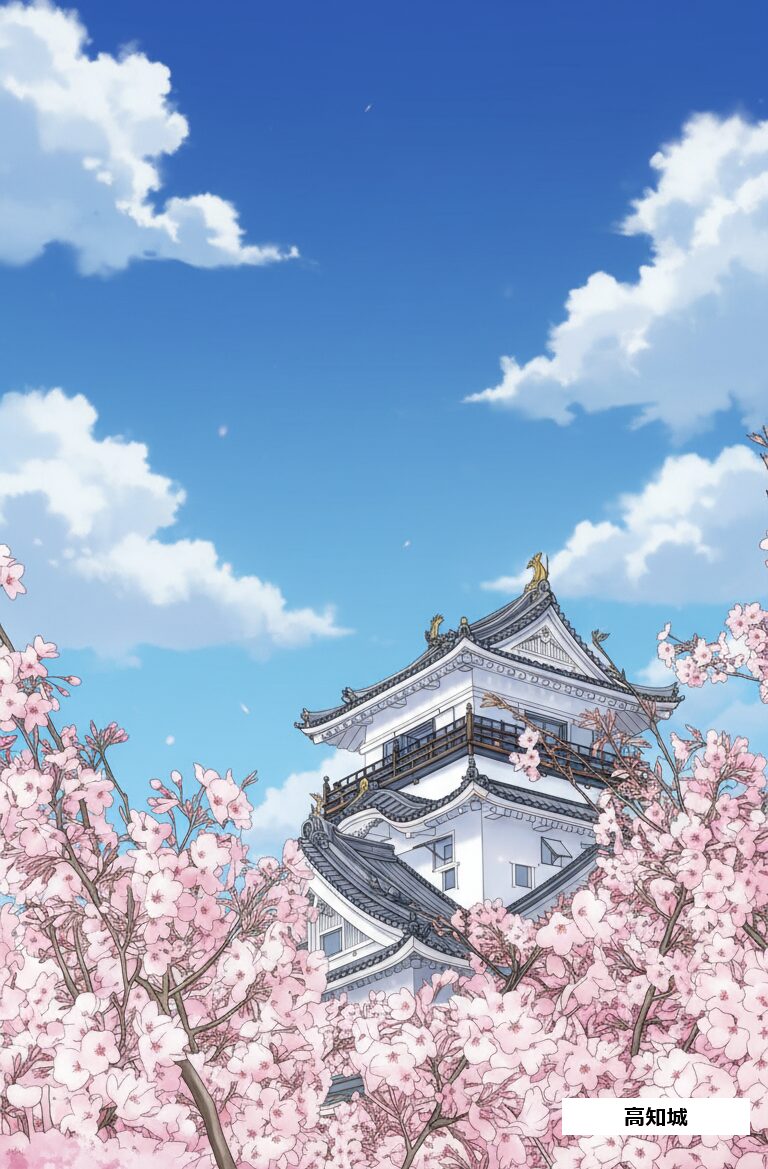
“The Premier Castle of Nankaido”—Where Feudal Japan Lives On
A Magnificent Wooden Castle Preserving the Spirit of Feudal Japan
Rising majestically in the heart of Kochi City stands Kochi Castle—and here’s what makes it truly extraordinary: it’s one of only twelve original wooden castle keeps still standing in all of Japan. Think about that for a moment. While most of Japan’s castles today are modern concrete reconstructions, this is the real deal, you know.
The castle’s story begins in 1601, when Yamauchi Kazutoyo, the first feudal lord of the Tosa domain, broke ground on this ambitious project. It took a full decade to complete, with the entire castle complex finished in 1611. Now, I won’t sugarcoat it—the castle did suffer a devastating fire at one point. But here’s the beautiful part: in 1753, it was painstakingly rebuilt to match its original design down to the smallest detail. That commitment to authenticity is exactly what makes Japanese craftsmanship so remarkable.
The castle’s graceful silhouette earned it the title “The Premier Castle of Nankaido” (Nankaido was the old name for this region of Shikoku), and it remains Kochi’s most beloved symbol to this day. When you see it rising above the modern cityscape, it’s like stepping back in time.
Architectural Masterpiece—The Classic Watchtower-Style Keep
Let me tell you about the architectural brilliance of this castle, because it’s really something special. Kochi Castle is considered a quintessential example of what’s called a bōrō-gata tenshu—a watchtower-style keep. It’s a fascinating design.
From the outside, you’ll see four distinct layers creating that classic tiered pagoda silhouette, but the interior is actually six floors across three levels. The unique structure features a traditional irimoya hip-and-gable roof crowned by an observation tower—the “watchtower” that gives this architectural style its name. It’s both beautiful and practical, which is exactly the kind of elegant functionality you see in the best Japanese design.
What really catches the eye is the striking contrast between the pristine white plaster walls and the black weatherboarding (shitamiban) that protects the lower sections. That interplay of light and dark isn’t just aesthetically stunning—it’s become one of the most photographed features of the castle. Every angle offers something different, and the craftsmanship is simply exquisite.
Feel Like a Feudal Lord—Panoramic City Views Await
Here’s where the experience really becomes memorable. When you climb to the top floor of the keep—and yes, those traditional steep wooden stairs are quite the workout!—you’re rewarded with breathtaking panoramic views of Kochi City spreading out below you.
Standing up there, gazing out over the modern city from this centuries-old vantage point, you genuinely feel like a feudal lord surveying your domain. It’s one of those moments where history comes alive, you know? No wonder it’s become such a popular photo spot—the perspective is simply incredible.
Now, here’s something that makes Kochi Castle even more exceptional: it’s one of the very few castles in Japan where the main palace hall (honmaru goten) has survived alongside the keep itself. Most castles lost these residential buildings to fire, war, or demolition over the centuries, but not Kochi.
This palace is where Lord Yamauchi Kazutoyo and his wife Chiyo—a remarkable woman in her own right—are said to have lived. Walking through these rooms, you’re literally stepping into the private world of a powerful feudal family. The wooden floors creak beneath your feet, sunlight filters through the paper screens just as it did 400 years ago, and you can almost sense the conversations and decisions that shaped this region’s history. It’s quite moving, actually.
A Defender’s Dream—Ingenious Fortifications
he castle wasn’t just built to be beautiful—it was designed to be impregnable. Take the Ōtemon (Main Gate) at the castle’s front entrance, for instance. This imposing gateway was the first formidable obstacle any attacker would face, and let me tell you, it was deliberately designed to give defenders every possible advantage…
Practical Information for Your Visit
| Item | Details |
|---|---|
| Location | 1-2-1 Marunouchi, Kochi City, Kochi Prefecture |
| Access | About 25 minutes by car from Kochi New Port Passenger Terminal |
| Opening Hours | 9:00 AM – 5:00 PM (last admission at 4:30 PM) |
| Closed | December 26 – January 1 |
| Feature | The only castle in Japan where both the main keep and the palace remain intact. |
Kochi Castle Summary
・ One of Japan’s twelve original castles, preserving its historic appearance.
・ A classic example of a watchtower-style castle, showcasing the beauty of wooden architecture.
・ The panoramic view from the main keep is breathtaking — you can see all of Kochi City.
・ Many valuable original structures remain, including the main palace (Honmaru Goten) and Otemon Gate.
Kochi Castle, where history and beauty come together, is a must-see for castle enthusiasts and history lovers alike.
When visiting Kochi, don’t miss the chance to explore this remarkable landmark.
Harimaya Bridge—Where a Forbidden Love Story Lives On
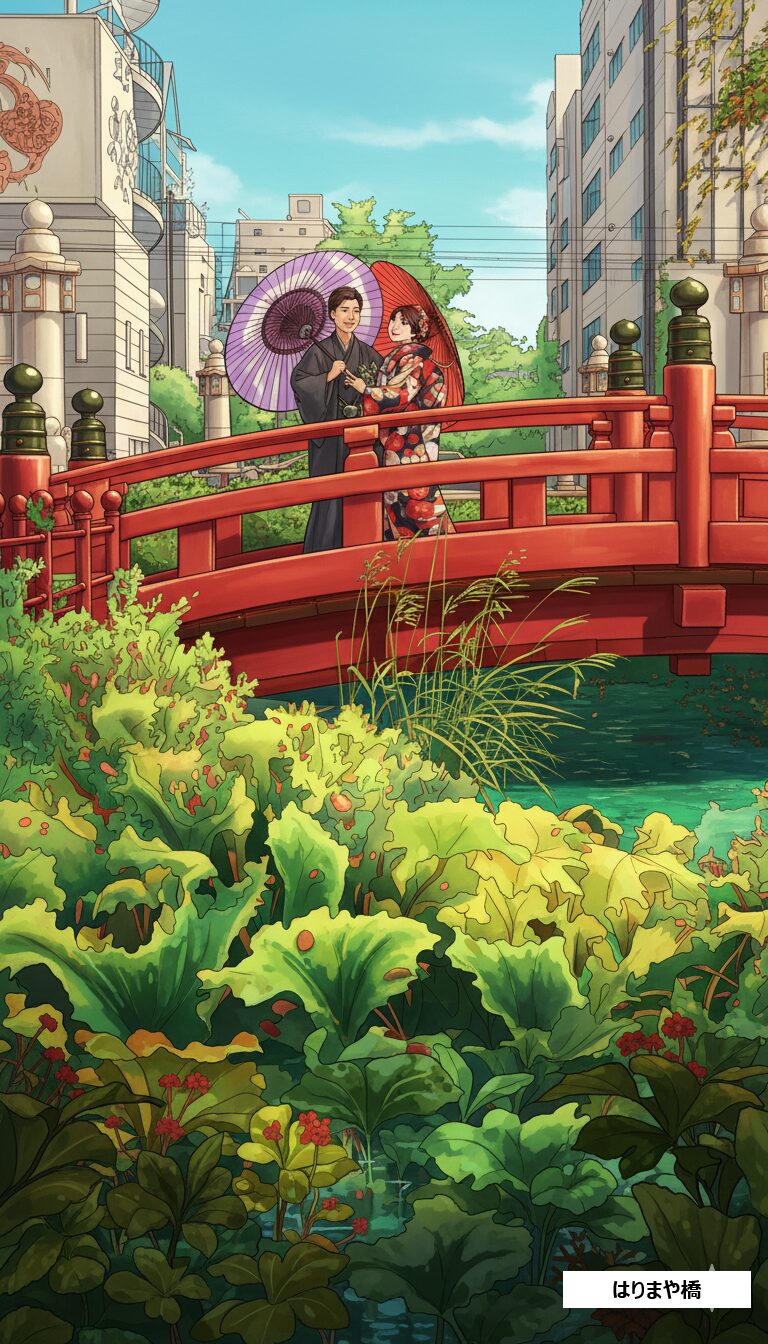
The Bridge Immortalized in Song—A Tale of Star-Crossed Lovers
In the heart of Kochi City, you’ll find a small red bridge with an outsized romantic reputation—Harimaya Bridge (Harimayabashi). This unassuming little structure is famous throughout Japan as the setting of a poignant love story between a Buddhist monk named Junjin and a young woman named Ouma. It’s the kind of tale that tugs at the heartstrings, you know.
The bridge gained nationwide fame through the beloved folk song “Yosakoi Bushi,” which includes these memorable lines:
“At Harimaya Bridge in Tosa’s Kochi town,
I saw a young monk buying a hair ornament”
That simple verse captured the imagination of generations, transforming Harimaya Bridge into one of Japan’s most recognized symbols of forbidden love. Even today, when Japanese people hear the name “Harimaya Bridge,” they immediately think of romance—often bittersweet, always memorable.
The Legend: A Love That Defied Convention
Here’s the story behind the song, and it’s genuinely touching. During the Edo period (think 17th-19th century), a Buddhist monk named Junjin fell deeply in love with Ouma, a townsgirl who worked at a local inn. Now, you have to understand—in feudal Japan, Buddhist monks took strict vows of celibacy, and romantic relationships were absolutely forbidden. Their love was doomed from the start.
But love, as it often does, found a way to express itself. One day, Junjin was spotted at this very bridge purchasing a beautiful kanzashi—a traditional decorative hair ornament—for Ouma. In that era, such a gesture was unmistakably romantic, like buying an engagement ring today. The sighting became the gossip of the town, and their secret love affair was suddenly public knowledge.
The consequences were severe. Facing social disgrace and religious sanctions, the couple was ultimately separated. Their love story—passionate, genuine, but ultimately tragic—resonated so deeply with people that it became the inspiration for “Yosakoi Bushi.” The bridge where that fateful hair ornament was purchased became forever associated with their romance.
It’s a reminder that love stories—especially the complicated, bittersweet ones—transcend time and culture, isn’t it lovely?
From Merchant Convenience to Romantic Icon
Interestingly, the bridge’s original purpose was far more mundane than its romantic reputation suggests. The name “Harimaya” comes from two merchants—the Harimaya (a fabric shop) and the Fudeya (a brush shop)—who operated businesses on opposite sides of the Horikawa Canal during the Edo period. They built this private bridge simply to make it easier for customers to go back and forth. How practical, right?
The current bridge you’ll see is a beautiful reconstruction designed specifically for tourists, with distinctive red railings that photograph wonderfully. The original bridge has long since disappeared as the city modernized, but this faithful replica captures its spirit perfectly.
At the bridge’s entrance, you’ll find a charming monument depicting Junjin and Ouma’s story. It’s become quite the pilgrimage site for couples and romantics—many visitors make wishes for lasting love, touch the monument for good luck, or simply pause to reflect on this centuries-old tale of passion and sacrifice. There’s something genuinely moving about seeing modern couples connecting with a love story from 400 years ago.
Picture-Perfect and Instagram-Worthy
Let me tell you—this bridge is an absolute photographer’s dream. Its vibrant red color pops beautifully against the urban backdrop, making it one of Kochi’s most photographed landmarks. But the real magic happens after sunset. As evening falls and the surrounding lights come on, the bridge is illuminated in a soft glow that’s honestly quite romantic. The red lacquered railings seem to float in the darkness, creating an almost ethereal atmosphere. It’s no wonder couples flock here for photos!
The surrounding area has been thoughtfully developed as well. Right nearby, you’ll find Harimaya Bridge Park and the Yosakoi Information Exchange Center, where you can dive deeper into the dance culture and history of Kochi. It’s a lovely little cultural cluster—you can photograph the famous bridge, learn about the folk traditions, and soak up some local atmosphere all in one compact area.
Pro tip: Visit during the day for clear photos and to explore the museums, but if you’re feeling romantic or want truly atmospheric shots, come back at dusk. The transformation is remarkable, and you’ll understand why this humble little bridge has inspired poetry, songs, and countless love stories over the centuries.
The bridge might be small—you can walk across it in about ten seconds—but its cultural significance is enormous. That’s how it works with the best landmarks, isn’t it? Size doesn’t matter when the story behind it captures the human heart.
Harimaya Bridge Travel Guide
| Item | Details |
|---|---|
| Location | Harimayacho 1-chome, Kochi City, Kochi Prefecture |
| Access | About 25 minutes by car from Kochi New Port Passenger Terminal |
| Highlights | The red bridge with railings, the love story of pure-hearted maiden and horseman, and the setting of the Yosakoi folk song |
| Nearby Spots | Kochi Castle, Hirome Market, Yosakoi Information Exchange Center |
Highlights of Harimaya Bridge
・ The romantic setting of the love story sung in the famous Yosakoi-bushi folk song
・Originally built by a merchant during the Edo period
・Popular as a romantic spot believed to bring good luck in love
・A symbolic landmark of Kochi, perfect for photos and strolls
When visiting Kochi, don’t miss Harimaya Bridge.
Take a moment to reflect on the pure and touching love story of the monk Junshin and the maiden Ouma, and enjoy a peaceful stop on your journey.
Kochi’s Culinary Treasures: Food Experiences You’ll Never Forget
Hirome Market—Where Street Food Meets Local Heart
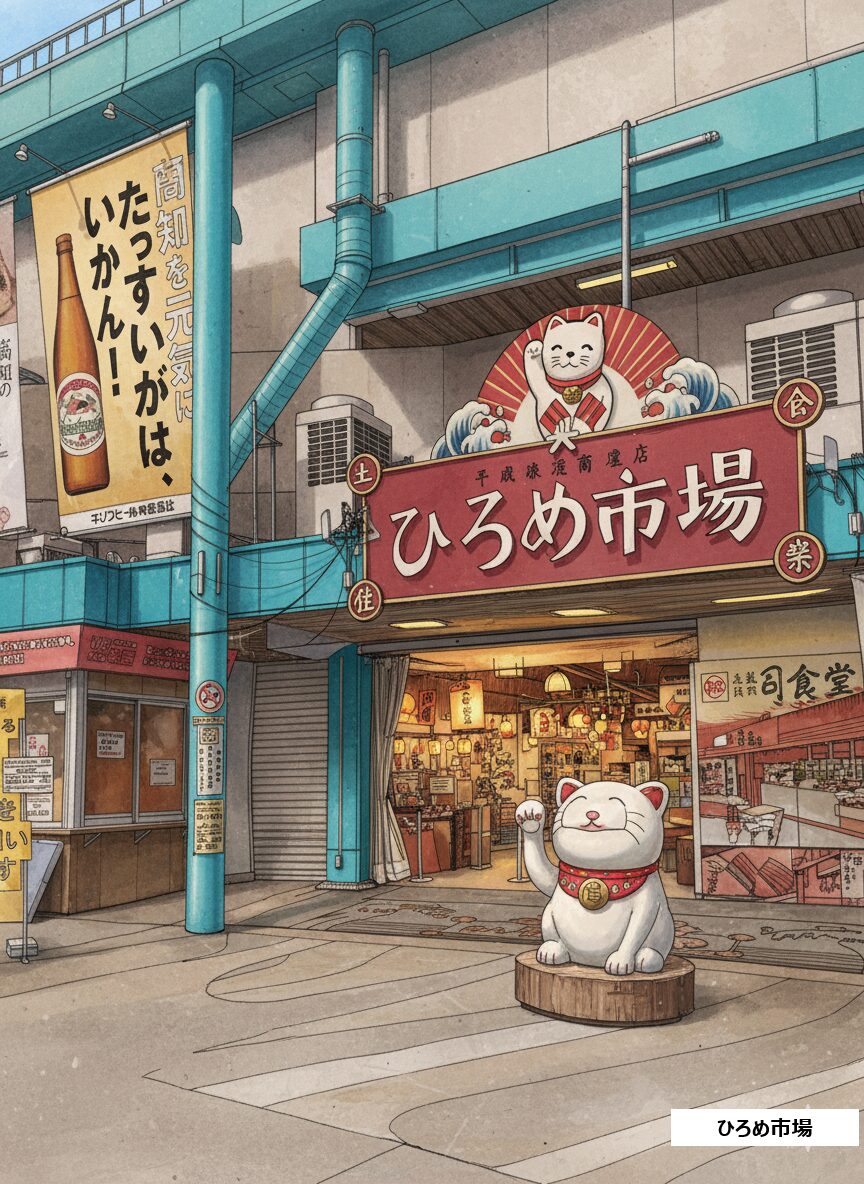
A Culinary Theme Park Buzzing with Street Food and Smiling Locals
Just a stone’s throw from Kochi Castle, you’ll find Hirome Market (Hirome Ichiba)—and trust me, this place is an absolute must-visit. Imagine a vibrant indoor food hall where you can sample virtually every Kochi specialty under one roof, all in a lively street-food atmosphere that feels authentically local.
The market houses around 46 food stalls and 7 specialty shops, all packed into an energetic space that’s part farmers market, part izakaya, and entirely wonderful. What makes it special? It’s where locals and travelers sit side by side, sharing tables, swapping stories, and enjoying incredible food together. There’s this beautiful democratic energy here—whether you’re a salaryman grabbing dinner or a cruise passenger exploring Kochi’s flavors, everyone’s equal at Hirome Market. It’s really nice, you know.
The Story Behind the Name
Here’s a lovely bit of history: the market’s name honors Fukao Hirome Shigeaki, a chief retainer (basically a senior advisor) to the Tosa feudal lord who was deeply beloved by the common people. That spirit of being “of the people, for the people” still defines Hirome Market today—it truly embodies the heart and soul of Kochi, remaining a cherished gathering place where the city’s warm character shines through.
A Parade of Local Delicacies
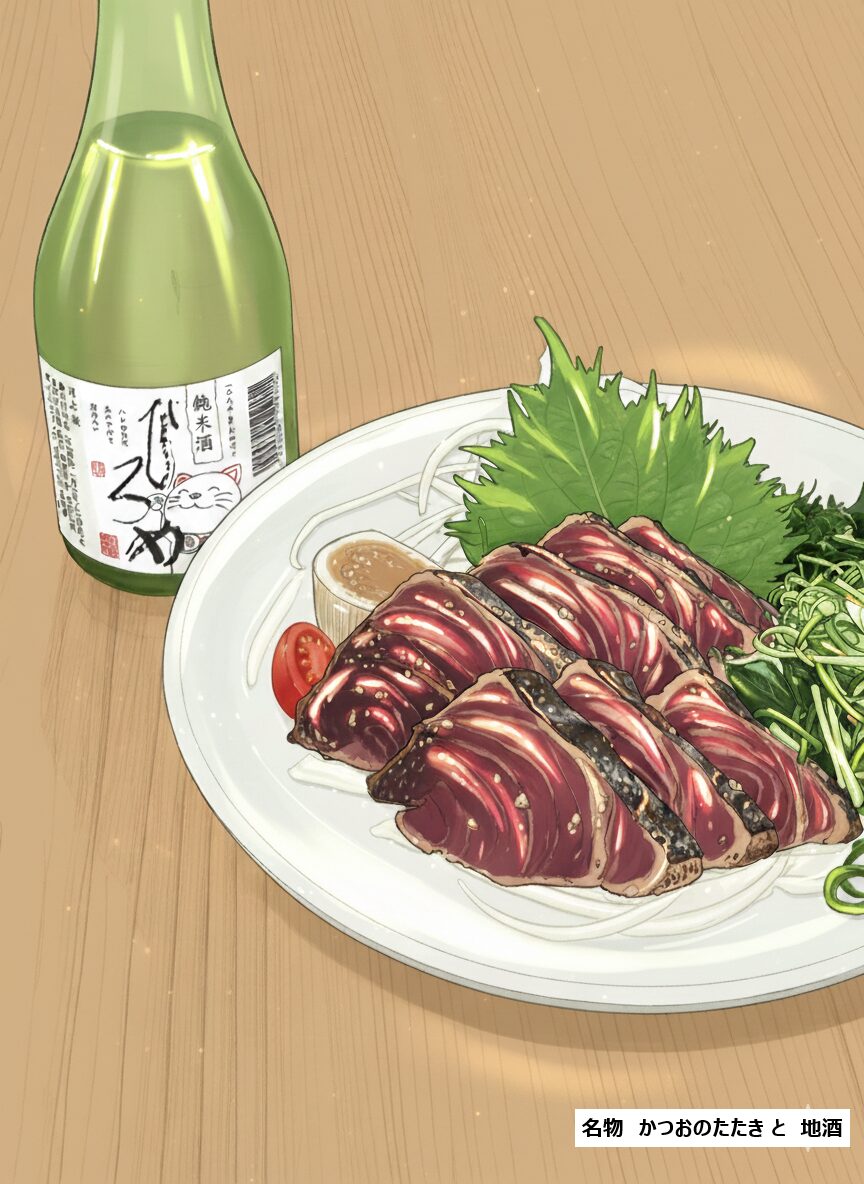
Now let’s talk about the food—because oh my, the food! The absolute star of the show is katsuo no tataki, skipjack tuna that’s been seared over roaring straw flames. Picture this: you’re walking through the market when suddenly you’re hit with the most incredible aroma—smoky, rich, absolutely mouthwatering. Many stalls sear the fish right in front of you, and watching those flames leap up as the chef expertly chars the outside while leaving the inside ruby-red rare… it’s quite the spectacle.
But that’s just the beginning. You’ll find Tosa Akaushi beef—a premium local wagyu that’s marbled to perfection—served as steaks that practically melt in your mouth. There’s whale cuisine (yes, it’s part of the traditional food culture here), jidori chicken from the local gamecock breed that’s prized for its firm, flavorful meat, and dozens of other specialties you simply won’t find anywhere else.
Here’s how it works at Hirome—and I love this system. You wander from stall to stall, ordering whatever catches your eye. Maybe it’s that sizzling tuna tataki from one vendor, some crispy fried chicken from another, and a plate of gyoza from a third. Then you grab a seat at one of the communal tables—wherever there’s room—and dig in. It’s casual, it’s convivial, and it’s absolutely delicious. That’s the “Hirome style,” and honestly, it’s perfect.
The Atmosphere Is Part of the Feast
As evening rolls around, something magical happens. Local office workers start streaming in after work, greeting each other with cheerful shouts of “Otsukaresan!” (basically “Great job today!”—it’s the Japanese equivalent of “Cheers to surviving another workday!”). They grab cold mugs of local craft beer or glasses of sake, find a spot at the communal tables, and unwind.
And here’s the beautiful part: before you know it, you might find yourself chatting with the person next to you. Maybe it’s a local craftsman who’s eager to recommend the best stalls, or a fellow traveler comparing notes on Kochi’s hidden gems. The barriers just melt away when everyone’s sharing good food and good drinks, you know?
Kochi is famous for its sake—the local rice wine here is exceptional—and the market has excellent selections. Pair a crisp, cold glass with that seared bonito, and you’ll understand why the locals consider this perfect happiness. This warm, inclusive atmosphere is honestly one of Hirome Market’s greatest charms. It’s not just about eating; it’s about connecting.
Perfect for Souvenir Hunting Too
Before you leave, make sure to explore the specialty shops scattered throughout the market. You’ll find vacuum-packed katsuo no tataki that travels beautifully (so you can recreate that amazing flavor back home), bottles of local sake with gorgeous traditional labels, and yuzu (Japanese citrus) products that make wonderful gifts. The traditional sweets from Kochi also make perfect souvenirs—they’re distinctive without being overly sweet, which many Americans really appreciate.
Pro tip from someone who’s learned the hard way: During peak hours—especially early evenings and weekends—the market gets absolutely packed. The smart move? Grab a table first, then have one person hold down the fort while others go exploring and ordering. It’s just how things work here, and everyone does it, so don’t feel awkward about it!
Hirome market Travel Guide
| Item | Details |
|---|---|
| Location | 2-3-1 Obiyamachi, Kochi City, Kochi Prefecture |
| Access | About 5 minutes on foot from Kochi Castle / About 25 minutes by car from Kochi New Port Passenger Terminal |
| Opening Hours | 10:00 AM – 11:00 PM (varies by store) |
| Closed | Irregular holidays |
| Feature | A food stall–style market where you can enjoy Kochi’s local specialties all in one place |
Hirome Market Summary
・A lively food market near Kochi Castle, filled with local dishes and friendly vibes.
・Enjoy Kochi’s specialties such as Katsuo no Tataki (seared bonito) and Tosa Akaushi (Tosa red beef).
・A great place to chat with locals over a glass of Kochi sake.
・Also perfect for souvenir shopping — a must-visit spot for Kochi travelers.
If you want to experience the true heart of Kochi’s food culture, Hirome Market is the place to be.
Drop by between your sightseeing stops and enjoy the warmth of local people and flavors.
Summary:Kochi is Waiting for You
飛鳥Ⅱは、定刻通り高知新港を出港しました! pic.twitter.com/syPZKdsWf9
— ひょうが (@VXysu6BJFXVBVOc) August 29, 2023
When I first pulled into Kochi, I wasn’t expecting much. But somewhere between riding that Kochi. This wasn’t just sightseeing – this was an actual encounter with real Japan.
Only half a day? It’s certainly short. But moments etched in the heart cannot be measured by time. The breathtaking view of Kochi city from the castle keep. The traditional Japanese landscape seen by the samurai Sakamoto Ryoma, who shaped modern Japan. The smiling faces of locals raising a toast. These are measured by memory.
Now go. Kochi’s waiting.
Looking to book shore excursions for your cruise? These are the services I recommend:
- japanshoreexcursions.com
- shoreexcursions.asia
- vietnamshoreexcursions.asia
- chinashoreexcursion.com
- globalshoreexcursions.com

If you’re curious to learn more about what makes these Japan-based cruises so special, I’ve put together detailed articles on each one—feel free to check them out!
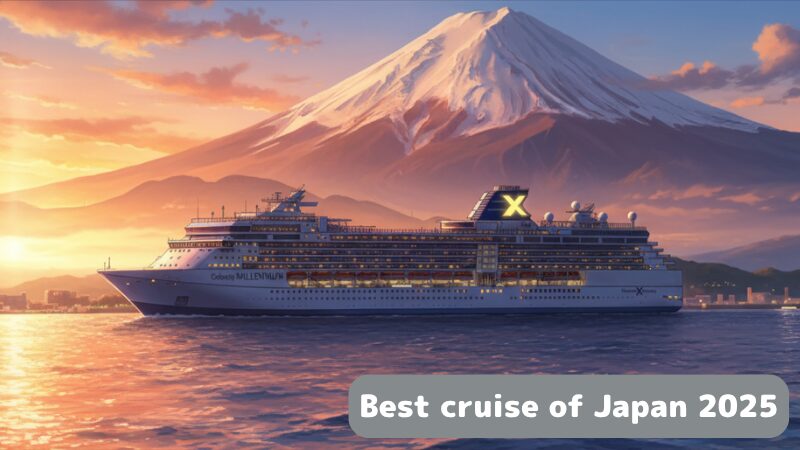 The Best Japan Cruises 2026: An Insider's Guide to Unforgettable Cultural Experiences
If you're planning a cruise from Japan, you might be wondering: Want to experience authentic Japanese culture and festivals—but not sure where to start? Wondering when's the best time to cruise Japan? Curious if you'll actually get to explore those historic sites you've been dreaming about? If you try looking at cruise line websites, you'll find that very few of…
The Best Japan Cruises 2026: An Insider's Guide to Unforgettable Cultural Experiences
If you're planning a cruise from Japan, you might be wondering: Want to experience authentic Japanese culture and festivals—but not sure where to start? Wondering when's the best time to cruise Japan? Curious if you'll actually get to explore those historic sites you've been dreaming about? If you try looking at cruise line websites, you'll find that very few of…
 The Ultimate Guide to Cruises Around Japan: Luxury, Culture, and Everything in Between
If you're planning a cruise from Japan, you might be wondering: Hokkaido's nature, Kyoto's temples, Kyushu's hot springs—I want it all, but how? Japan has so much to see, but who wants to spend their vacation packing and unpacking at every stop? "I want to relax AND see Japan's best. Is that too much to ask? You're not alone—and I'm…
The Ultimate Guide to Cruises Around Japan: Luxury, Culture, and Everything in Between
If you're planning a cruise from Japan, you might be wondering: Hokkaido's nature, Kyoto's temples, Kyushu's hot springs—I want it all, but how? Japan has so much to see, but who wants to spend their vacation packing and unpacking at every stop? "I want to relax AND see Japan's best. Is that too much to ask? You're not alone—and I'm…
 Diamond Princess Japan 2026: Compare Cruise Plans, Prices & Itineraries
If you're planning a cruise from Japan, you might be wondering: I keep hearing about Princess Cruises for Japan—but is it really worth it? I only have limited vacation time—which itinerary will let me see the most important parts of Japan? I'm worried about the language barrier and cultural differences—will a cruise make Japan more accessible for me? If any…
Diamond Princess Japan 2026: Compare Cruise Plans, Prices & Itineraries
If you're planning a cruise from Japan, you might be wondering: I keep hearing about Princess Cruises for Japan—but is it really worth it? I only have limited vacation time—which itinerary will let me see the most important parts of Japan? I'm worried about the language barrier and cultural differences—will a cruise make Japan more accessible for me? If any…
 Celebrity Millennium Japan 2026: Compare Cruise Plans, Prices & Itineraries
If you're planning a cruise from Japan, you might be wondering: I keep hearing about Celebrity Cruises for Japan—but is it really worth it? I only have limited vacation time—which itinerary will let me see the most important parts of Japan? I'm worried about the language barrier and cultural differences—will a cruise make Japan more accessible for me? If any…
Celebrity Millennium Japan 2026: Compare Cruise Plans, Prices & Itineraries
If you're planning a cruise from Japan, you might be wondering: I keep hearing about Celebrity Cruises for Japan—but is it really worth it? I only have limited vacation time—which itinerary will let me see the most important parts of Japan? I'm worried about the language barrier and cultural differences—will a cruise make Japan more accessible for me? If any…
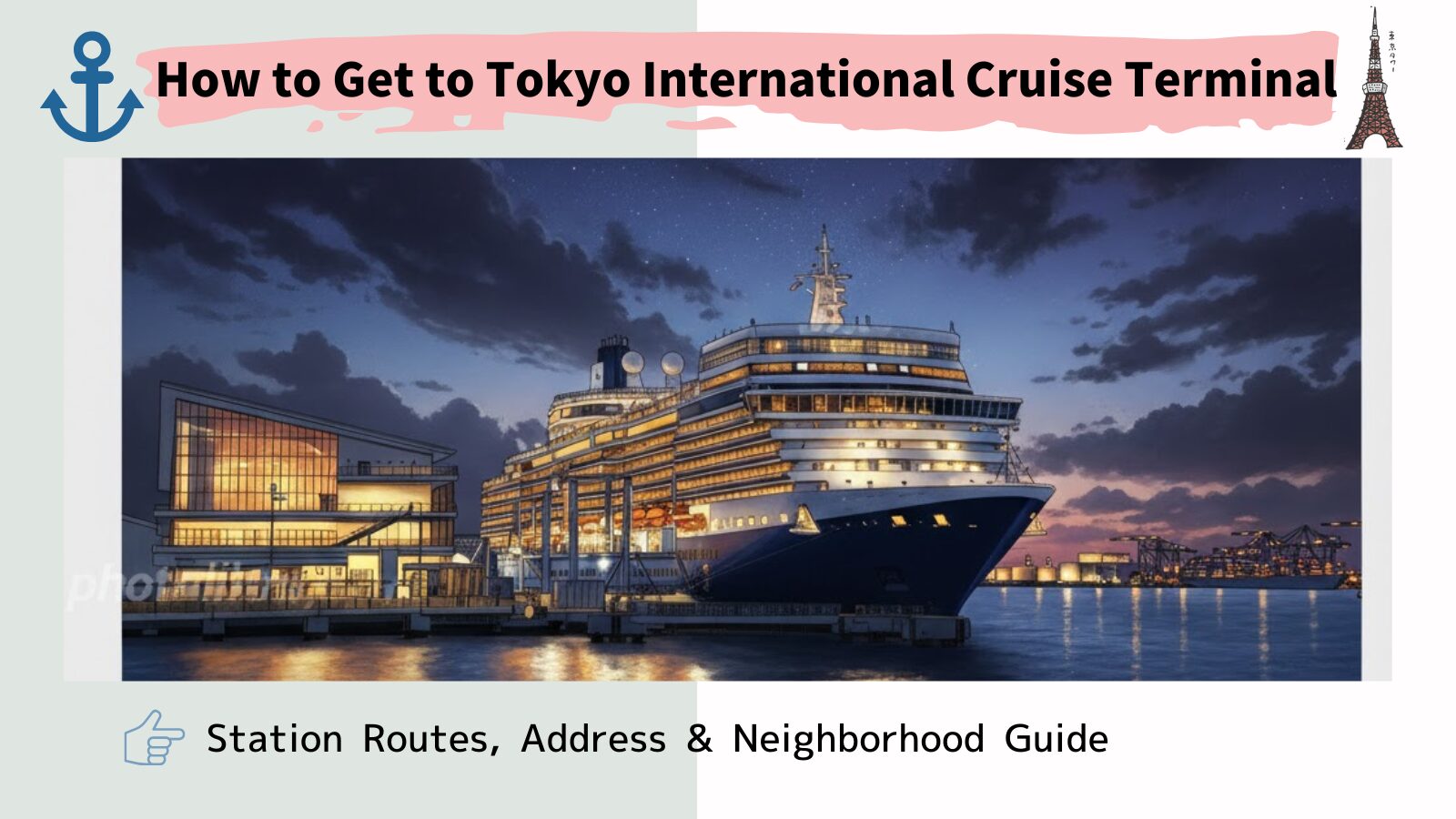 Your Complete Guide to Tokyo International Cruise Terminal: Address, Station Access & What's Nearby
If you're planning a cruise from Tokyo, you might be wondering: How do I navigate a foreign city with a language barrier? What's the easiest way to find the cruise terminal without getting lost? Where can I discover memorable spots near the terminal to make my visit truly special? You're not alone—and I'm here to help. Tokyo International Cruise Terminal…
Your Complete Guide to Tokyo International Cruise Terminal: Address, Station Access & What's Nearby
If you're planning a cruise from Tokyo, you might be wondering: How do I navigate a foreign city with a language barrier? What's the easiest way to find the cruise terminal without getting lost? Where can I discover memorable spots near the terminal to make my visit truly special? You're not alone—and I'm here to help. Tokyo International Cruise Terminal…
I’d love to help you experience Japan in this unique way. Let’s make it happen together!

I’ll keep sharing insider tips and updates about cruising in Japan, so please stop by again soon! I’m here to help you discover the best of Japan. Let’s explore together!
Happy cruising!– , Cruise Aoi